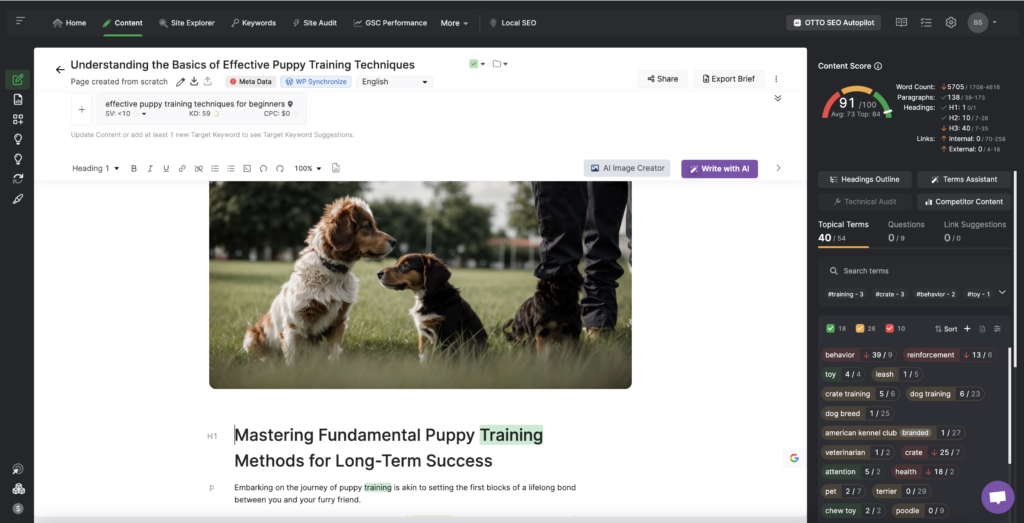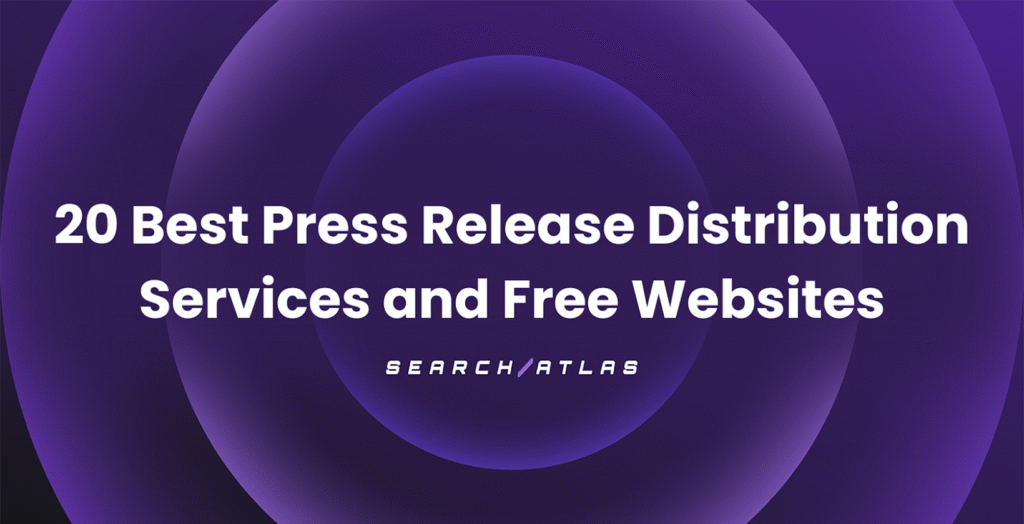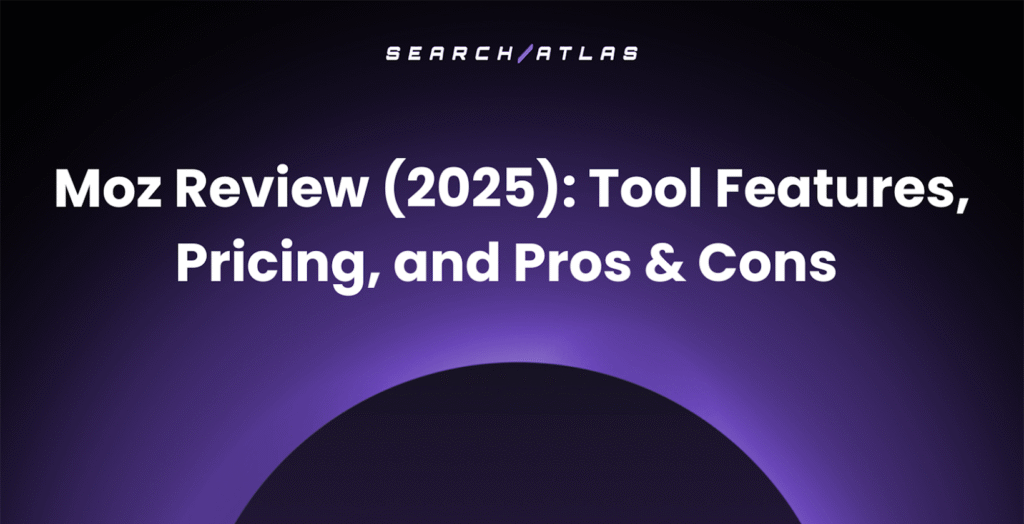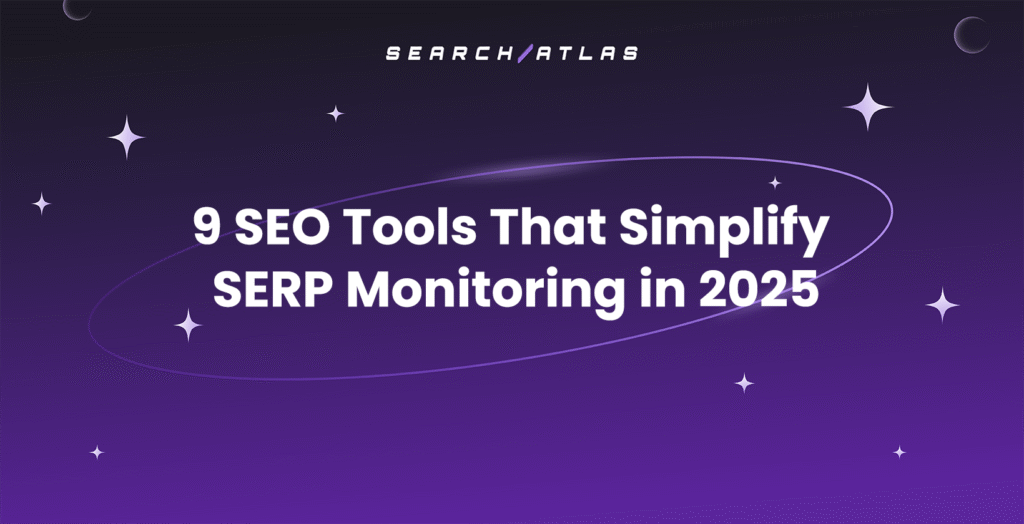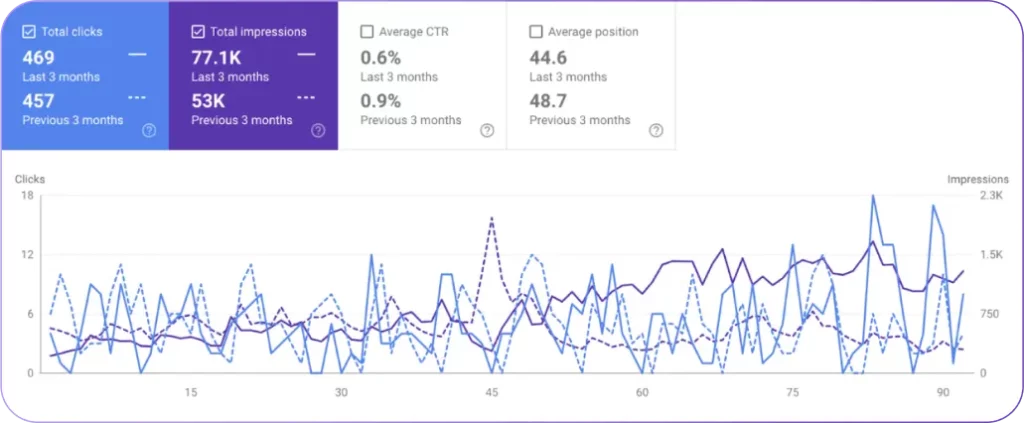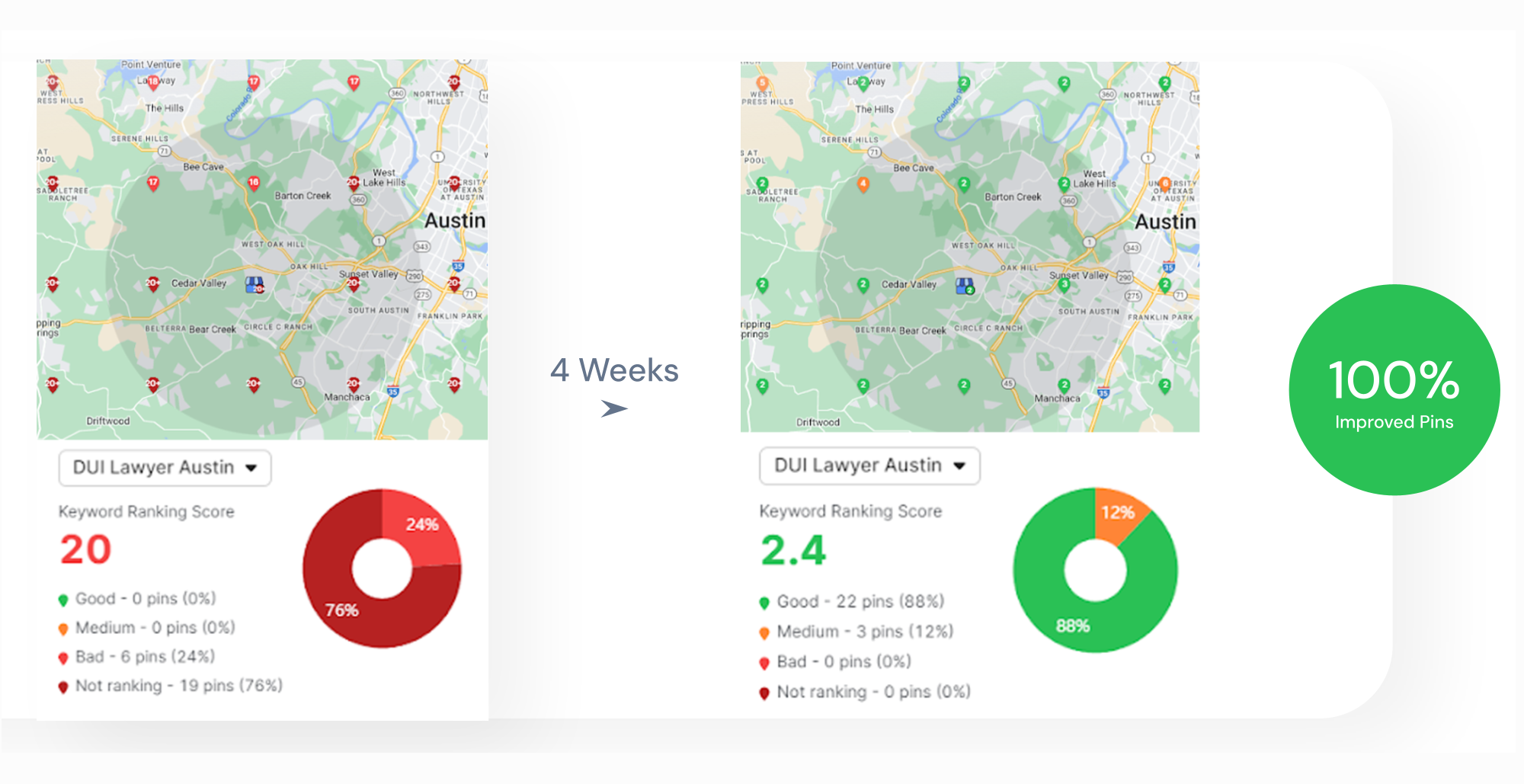SEO (Search Engine Optimization) is the practice of optimizing a website to increase its visibility in organic search engine results. SEO involves making technical and content improvements to help search engines like Google understand what your pages are about and determine their relevance to specific queries.
The SEO marketing goal is to rank on the first page of search engine results pages (SERPs) for valuable keywords that drive qualified traffic to your site.
SEO is indispensable because organic search delivers 53% of all website traffic, making it the primary channel for online discovery. Search engine optimization is built on a systematic approach guided by its four key pillars, which are technical SEO, on-page SEO, SEO content, and off-page SEO.
This complete SEO guide will walk you through the pillars of SEO, providing actionable strategies to establish a strong online presence, reach your target audience, and achieve sustainable growth through organic search.
What is SEO (Search Engine Optimization)?
SEO stands for Search Engine Optimization, the systematic process of improving a website’s visibility in unpaid search engine results to increase the quantity and quality of organic traffic. SEO involves optimizing the website’s content and technical aspects to help search engines crawl, understand, index, and rank pages appropriately for relevant search queries.
Search engine optimization is a type of search engine marketing (SEM) in the digital marketing industry. Within digital marketing, SEO represents the organic search channel focused on earning visibility rather than paying for it. Unlike paid advertising that stops generating traffic when campaigns end, SEO builds a sustainable online presence through optimizations that align with search engine algorithms and user expectations.
SEO ensures website content is accessible, relevant, and authoritative by optimizing site performance, creating audience-focused content, and building trust with users and Google’s algorithms. Therefore, SEO directly impacts user acquisition, brand awareness, and conversion rates.
The SEO community evolves and adapts to search engine updates and user behavior changes. With AI becoming more integrated into how users search and interact online, it’s becoming even more challenging for both the SEO community and search engines to keep up.
What is the Importance of SEO?
SEO is a critical internet marketing channel that serves as the foundation for sustainable online visibility and business growth. Optimizing your website to rank higher in search results connects you with users actively seeking information, products, or services related to your business.
The importance of SEO cannot be overstated. Search engines process over 8.5 billion searches daily on Google alone, with Google owning 91% of the global search market. This massive reach makes search the primary gateway to the internet for most users, with organic search delivering more than half of all website traffic.
SEO optimization provides five main benefits. The 5 main benefits of optimizing a website for SEO are listed below.
- Increases organic traffic. The website attracts more visitors through organic search results, generating a steady flow of quality traffic.
- Enhances brand awareness. The brand gains greater visibility, making it more likely for users to recognize and remember it.
- Boosts conversion rates. The visitors take desired actions, like making purchases or signing up, due to an optimized user journey.
- Improves cost-effectiveness. The marketing efforts deliver strong results without significant reliance on paid advertising, maximizing overall efficiency.
- Enriches user experience. The website provides a seamless and enjoyable experience, keeping users engaged and encouraging them to return.
Websites ranking highly in search results are generally perceived as more trustworthy and authoritative by users, enhancing brand credibility.
Additionally, SEO provides critical market intelligence through keyword data, revealing insights about consumer needs, interests, and behaviors that can inform broader business strategy.
What are the 4 Pillars of SEO?
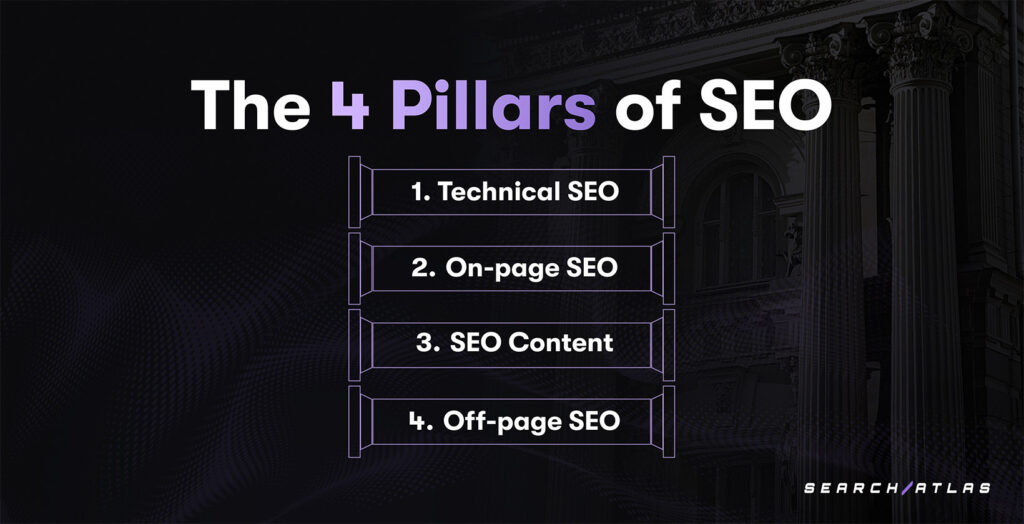
The 4 pillars of SEO are technical SEO, on-page SEO, SEO content, and off-page SEO. The four pillars of SEO are outlined below.
1. Technical SEO
Technical SEO is the process of optimizing a website’s health and structure to help search engines crawl, render, index, and rank the website effectively. Technical SEO creates the foundation that enables search engines to discover, access, understand, and index your website’s content.
Key aspects of technical SEO include site architecture, HTML tags, security, sitemaps, robots.txt, meta robot tags, fixing duplicate content, pagination, internal linking, broken link management, breadcrumb navigation, page speed, Core Web Vitals, mobile-friendliness, and accessibility.
Technical SEO optimization provides benefits for the user experience (UX), including reducing page load times, eliminating broken links, preventing duplicate content issues, and ensuring accessibility for all users.
Without a technically sound website, even the best content may never be discovered by search engines or users. Technical SEO directly impacts Core Web Vitals, a confirmed ranking factor measuring loading performance, interactivity, and visual stability. Technical issues can trigger ranking penalties or prevent indexation entirely, making technical SEO fundamental to SEO success.
2. On-page SEO
On-page SEO involves optimizing individual web pages to rank higher and earn more relevant traffic in search engines. The on-page SEO pillar focuses on both the content visible to users and the HTML source code that can be directly optimized within each page.
Key components of on-page SEO include strategic keyword placement in title tags, meta descriptions, and header tags; creating SEO-friendly URL structures; implementing effective internal linking; enhancing content readability with proper formatting; and adding schema markup for improved search appearance.
On-page optimization is the bridge between technical foundation and content quality, ensuring search engines can access your content and understand its relevance to specific searches and user intent. An effective on-page SEO strategy improves search visibility and user experience by making content more accessible, relevant, and engaging for search engines and human visitors.
3. SEO Content
SEO content is web content created and optimized to rank higher in SERPs. SEO content includes blog posts, articles, product pages, landing pages, videos, infographics, and guides. Content created for SEO is optimized around specific keywords, addresses relevant user intent, and provides valuable information for the user.
SEO content is characterized by keyword optimization, content quality, freshness, accuracy, depth, value, relevance, uniqueness, consensus, readability, visual assets, and adherence to Google’s E-E-A-T (Experience, Expertise, Authoritativeness, Trustworthiness) principles.
Content is what users ultimately come to consume, making this pillar essential for converting traffic into meaningful engagement and business results. High-quality content naturally attracts backlinks, social shares, and repeat visits, which all serve as positive signals to search engines. In Google’s official statement, “creating compelling and useful content will likely influence your website more than any of the other factors,” highlighting the central role SEO content plays in SEO success.
4. Off-page SEO
Off-page SEO encompasses all optimization activities conducted outside your website to improve its search engine rankings and overall online authority. Off-page SEO focuses on building external signals that demonstrate your site’s credibility, relevance, and trustworthiness to search engines.
Off-page SEO includes features like link building, guest blogging, broken link building, resource page link building, digital PR outreach, content marketing, social media marketing, influencer marketing, podcasts, content syndication, forums and Q&A sites, video marketing, local SEO, Google Business Profile (GBP), directory listings, local citations, reviews, brand building, brand mentions. Google uses off-page SEO factors as trust signals to assess a website’s credibility and relevance. More high-quality trust signals lead to higher rankings in search results.
While you maintain 100% control over technical and on-page factors, off-page elements require strategic outreach and relationship building, making this pillar both challenging and immensely valuable for competitive advantage.
How Do Search Engines Work in Relation to SEO?
Search engines work through a systematic process that transforms billions of web pages into a searchable index, allowing users to find the information they need. The four main steps of the search engine process are crawling, rendering, indexing, and ranking (query-document matching).
- Crawling. Crawling involves discovering content across the web using automated programs called crawlers or spiders. These crawler bots follow links from page to page, building a map of available content on the internet. Improving crawlability requires implementing proper site structure, creating comprehensive XML sitemaps, and developing strategic internal linking patterns that guide crawlers to all important pages with less budget.
- Rendering. Rendering processes the HTML, CSS, and JavaScript to interpret how pages appear to users. The rendering stage evaluates visual layout, content placement, and interactive elements that create the full user experience. Enhancing rendering efficiency involves optimizing for mobile devices, reducing JavaScript dependencies, and ensuring fast page loading speeds for better user engagement.
- Indexing. Indexing stores processed pages in a massive searchable database after evaluating their quality. The indexing process determines which pages deserve to be included in the Google shared indexes based on content uniqueness, relevance, and overall value to users. Optimizing indexation requires creating high-quality original content, implementing proper HTML semantic structure, and avoiding duplicate content issues that confuse search engines.
- Ranking. Ranking matches user queries to indexed content using different information retrieval models, natural language processing techniques, and sophisticated machine learning algorithms. The Google ranking process evaluates hundreds of SEO ranking factors, including content quality, backlink profile, user experience signals, and technical optimization elements. Improving rankings requires understanding which factors carry the most weight for your specific industry and focusing optimization efforts accordingly.
SEO enhances each stage of the search engine process systematically. The optimization methodology aligns websites with SEO ranking factors while improving user experience. You need to understand how search engines work to be able to create a seamless pathway from crawling to ranking that increases visibility and drives qualified traffic to your website.
How to Do SEO?

Doing SEO successfully requires a strategic approach that balances optimization for search engines with creating value for users. The most successful SEO strategies achieve this balance by focusing on technical excellence, content quality, and authority building. When doing SEO, you need to balance the technical requirements that search engines need to crawl, render, index, and rank your content with an engaging, valuable experience that will satisfy users and encourage them to interact with your site.
The process for implementing website SEO is outlined in the 4 steps below.
1. Conduct the Research
Conducting research forms the foundation of any successful SEO strategy, providing critical insights that guide all subsequent optimization efforts. Comprehensive research helps you understand your audience, market, keyword opportunities, and competition before investing resources into implementation.
Research encompasses several key areas as listed below.
- Audience research to identify your target users’ demographics, needs, and online behavior.
- Keyword research to discover the specific terms and phrases your audience uses when searching. Keyword research forms the basis for your SEO strategy.
- Competitor research to analyze what’s working in your industry.
- Website research through technical, content, and backlink audits to identify existing issues and opportunities.
There are nine steps to conduct SEO research. The 9 steps for conducting SEO research are listed below.
- Perform an SEO audit. Analyze website health, performance, responsiveness, indexing issues, and site structure using tools like Google Search Console (GSC) and the Search Atlas SEO software platform.
- Identify target keywords. Use keyword research tools, like Google Keyword Planner and Search Atlas Keyword Researcher Tool, to find high search demand and low-competition keywords that match user intent.
- Analyze search intent. Determine if queries indicate informational, navigational, transactional, or commercial intent to align content accordingly.
- Evaluate competitor strategies. Study top-ranking pages for keyword usage, content structure, backlink profiles, and user engagement to identify competitive gaps.
- Examine on-page SEO factors. Assess title tags, meta descriptions, page layouts, URL structures, and internal linking to optimize content for search engines.
- Check content relevance and quality. Ensure existing content is valuable, authoritative, and meets current SEO best practices while identifying gaps for new content opportunities.
- Review the backlink profile. Use tools like Search Atlas backlink analysis tools to assess backlink quality and analyze referring domains.
- Inspect technical SEO elements. Verify structured data, canonical tags, hreflang attributes, and XML sitemaps to ensure that search engines understand and index the website content properly.
- Assess local SEO presence if applicable. Analyze Google Business Profile (GBP), local citations, and customer reviews to strengthen local search rankings (for local businesses targeting local audiences).
Thorough SEO research is important because it prevents wasted effort on strategies that don’t align with actual user behavior or search engine expectations.
Data-driven insights from research help prioritize the most valuable opportunities, understand what’s possible given your current authority and competition, and create content that truly addresses what your audience is searching for.
2. Plan the Strategy
Strategy planning translates research insights into a comprehensive roadmap for SEO implementation. A well-developed SEO strategy defines clear objectives, prioritizes tactics, and creates a framework for measuring success.
Planning an SEO strategy involves 9 vital steps as listed below.
- Define SEO goals. Set clear objectives, such as increasing organic traffic, improving domain authority, or boosting conversions, depending on the marketing strategy goals.
- Segment the target audience. Use SEO analysis tools to define audience demographics, search behaviors, and content preferences for precise targeting.
- Prioritize keyword clusters. Organize keywords into topical clusters to create a content hierarchy that improves site structure and semantic relevance.
- Map keywords to content types. Assign keywords to blog posts, landing pages, product pages, and other content types to maximize search intent alignment.
- Develop a content calendar. Plan content publication schedules, including frequency, formats, and topics, to maintain consistency and audience engagement.
- Optimize site architecture. Ensure a logical URL structure, breadcrumb navigation, and internal linking strategy to improve crawlability and user experience.
- Plan technical SEO enhancements. Outline improvements in site speed, mobile responsiveness, structured data, and indexing to strengthen search performance.
- Set a backlink acquisition strategy. Identify authoritative websites, industry directories, and outreach opportunities to build a strong backlink profile.
- Integrate local SEO if applicable. Evaluate the current local SEO efforts and determine the necessary actions for the strategy, such as optimizing the Google Business Profile, building local citations, and targeting relevant local keywords.
Strategic planning ensures that SEO efforts are focused on activities with the highest potential impact rather than random optimizations. An SEO strategy helps coordinate SEO with other marketing initiatives, sets realistic expectations for results, and provides a framework for consistent implementation over time.
A documented strategy facilitates communication with stakeholders and team members, ensuring everyone understands the priorities and expected outcomes of SEO activities.
3. Implement the SEO Content
Implementing SEO content transforms strategy into action by creating and optimizing the material users will actually engage with. The content implementation phase involves developing new content, enhancing existing pages, and ensuring all content aligns with both user needs and search engine requirements.
Implementing SEO content consists of ten key steps. The 10 steps to implement SEO content are listed below.
- Optimize title tags and meta descriptions. Craft compelling title tags and meta descriptions with primary keywords to improve click-through rates and topical relevance.
- Structure content with header tags (H1-H6). Use H1 for the main title, H2-H6 for subheadings, and include relevant keywords to improve contextual relevance, hierarchy, and structure.
- Create SEO-friendly URLs. Create short and descriptive URLs with primary keywords, avoiding stop words and unnecessary characters to enhance indexability and user experience.
- Use keyword placement strategically. Place primary keywords in the title, first 100 words, headers, and throughout the content naturally while maintaining readability and avoiding keyword stuffing.
- Implement internal linking. Link to relevant internal pages using keyword-rich anchor text to improve site structure, distribute link equity, and enhance user navigation.
- Optimize images and multimedia. Use descriptive file names, alt text, and compressed images to improve page speed, accessibility, and image search rankings.
- Ensure mobile-friendliness and readability. Prioritize fast loading times and design the website with a smaller mobile screen in mind to make content easily accessible and readable without zooming.
- Add structured data markup. Implement schema markup, such as FAQ, Article, Product, and Author, to enhance rich snippets and improve website ranking in search results.
- Enhance content engagement signals. Encourage comments, social shares, and user interactions by writing engaging, informative, and action-driven content.
- Optimize for E-E-A-T (Experience, Expertise, Authoritativeness, Trustworthiness). E-E-A-T are guidelines used by Google’s quality raters to assess the quality of a webpage, impacting its potential ranking in search results.
Content implementation directly impacts both user engagement and search visibility. High-quality, relevant content increases time on site, reduces bounce rates, and encourages sharing and linking. Google consistently emphasizes that helpful, people-first content is fundamental to ranking success, making this implementation phase critical for achieving sustainable SEO results.
4. Monitor the Results
Monitoring results is essential for evaluating the effectiveness of your SEO efforts, identifying areas for improvement, and adapting to changes in search algorithms or market conditions. Without consistent monitoring, you can’t determine whether your strategy is working or requires adjustment.
There are nine essential steps to carry out monitoring SEO results. These are listed below.
- Track organic traffic in Google Analytics (GA4). Monitor organic sessions in Google Analytics under Acquisition, All Traffic, and Channels to measure search-driven visits.
- Measure keyword rankings in SEO tools. Use Google Search Console and Search Atlas keyword tools to track keyword positions and identify ranking trends over time.
- Analyze click-through rates from SERPs. Check Google Search Console’s Performance Report to evaluate how often users click your links compared to impressions.
- Monitor bounce rate and dwell time. Use Google Analytics Engagement Metrics to assess if visitors stay or leave quickly, signaling content relevance and user experience.
- Evaluate backlink growth and quality. Leverage Search Atlas backlink analysis tools to track new and lost backlinks, domain authority, and referral traffic impact.
- Check indexing and crawling issues. Review Google Search Console’s Coverage Report for indexing errors, crawl anomalies, and mobile usability issues.
- Assess Core Web Vitals and page speed. Use Google PageSpeed Insights and Lighthouse to measure load speed, interactivity, and visual stability for SEO performance.
- Analyze conversion rates from organic traffic. Set up Google Analytics goals to track form submissions, purchases, or other key actions driven by search visitors.
- Monitor local SEO performance if applicable. Regularly check Google Business Profile Insights for local searches, call clicks, direction requests, and engagement. Track keyword rankings and reviews.
Monitoring provides the data needed to refine your SEO approach continuously. It helps identify which tactics are delivering results and which need modification, allows you to detect and address problems quickly before they significantly impact performance, and provides insights for ongoing optimization. What works today for SEO may not be as effective tomorrow, necessitating regular audits, analysis, and adjustments to maintain and improve results.
Can You Do SEO by Yourself?
Yes, you can do SEO by yourself, especially for smaller websites or if you’re willing to invest time in learning the SEO fundamentals. Many website owners and entrepreneurs successfully implement basic to intermediate SEO strategies without hiring specialists. This approach, often called DIY SEO (do-it-yourself SEO), involves improving a website’s search engine rankings independently, without hiring an SEO agency or expert.
Successfully managing your own SEO requires dedicating time to education through resources like Google’s SEO checklist and industry blogs. You’ll need to master essential skills including keyword research, content optimization, technical website management, and analytics interpretation. Free tools like Google Search Console, Google Analytics, and PageSpeed Insights provide valuable data without requiring financial investment. Following a structured SEO template can help ensure you cover all critical elements, from technical fundamentals to content creation and basic link building.
However, DIY SEO has limitations. As websites grow larger or competition intensifies, the complexity of SEO increases significantly. Advanced technical issues, comprehensive content strategies, and sophisticated link building often benefit from specialized expertise. It’s often necessary to consult an SEO professional or use advanced SEO tools like Search Atlas Software Platform for more complex SEO strategies, particularly in competitive industries or for larger websites.
How Long Does SEO Take to Show Results?
SEO typically takes 3-6 months to show meaningful results, though this timeline varies significantly based on website age, industry competitiveness, and implementation quality. This extended timeframe reflects the reality that search engines need time to crawl, index, and evaluate changes to your website while also assessing how users interact with your content compared to competitors.
New websites generally require 6-12 months to establish sufficient authority for meaningful rankings due to the lack of topical coverage, historical data, and overall topical authority. This longer timeline reflects the need to build credibility with search engines through consistent content publishing, technical optimization, and gradual accumulation of quality backlinks.
Local SEO efforts often show results faster than broader national campaigns, typically within 2-3 months of consistent implementation. This accelerated timeline reflects the lower competition in geographically restricted searches and the impact of Google Business Profile optimization, which can quickly improve visibility in local pack results.
How to Improve SEO Using Search Atlas OTTO SEO?
Search Atlas OTTO SEO is an AI-powered automation tool that improves SEO by implementing technical fixes and content improvements without requiring manual coding. The Search Atlas Software Platform streamlines SEO implementation through automated optimization across multiple areas.
Here are nine effective ways to improve SEO using Search Atlas OTTO SEO.
- Install the OTTO SEO plugin on your website to enable automated optimization. Simply add the plugin to your CMS (like WordPress), paste your unique OTTO script, and enable the tool to begin making improvements automatically.
- Deploy technical SEO fixes for improved search engine crawling and indexing. Search Atlas OTTO SEO identifies and corrects issues with title tags, meta descriptions, canonical tags, and internal linking structures that may be hindering your site’s performance.
- Optimize on-page content by implementing missing keywords detected through Google Search Console integration. Search Atlas OTTO SEO strategically incorporates these keywords to strengthen topical relevance without affecting user experience.
- Enhance image optimization by automatically adding descriptive alt text to images. Search Atlas OTTO SEO analyzes page context and adds relevant alt text with targeted keywords to improve image discovery in search results.
- Implement schema markup to increase rich results visibility. Search Atlas OTTO SEO generates and deploys structured data for your content, helping search engines better understand your content and potentially triggering enhanced listing features.
- Create topical maps for comprehensive content coverage. Search Atlas OTTO SEO analyzes your target keywords and generates detailed content plans that cover all related subtopics, strengthening your site’s topical authority.
- Improve internal linking structure by identifying and implementing strategic connections between related pages. Search Atlas OTTO SEO finds opportunities to connect content based on topical relevance, helping distribute page authority throughout your site.
- Generate and deploy FAQ content with proper schema markup. Search Atlas OTTO SEO creates question-answer pairs related to your target keywords and implements them with structured data to enhance content depth and featured snippet potential.
- Track optimization progress through the OTTO dashboard. Monitor deployed changes, track improvements in search performance, and identify new opportunities for optimization as they emerge.
Leveraging Search Atlas OTTO SEO dramatically reduces the time and expertise required for effective SEO implementation, making professional-level optimization accessible to businesses of all sizes.
What is an SEO Audit?
An SEO audit is a comprehensive examination and evaluation of a website’s search engine optimization performance that identifies issues, opportunities, and priorities for improvement. This systematic SEO analysis assesses all factors affecting search visibility, including technical infrastructure, on-page elements, content quality, and off-site signals.
An SEO audit examines technical aspects like site structure, crawlability, indexation status, and page speed; on-page factors including keyword usage, content quality, and meta tags; off-page signals such as backlink profiles and brand mentions; and user experience metrics like mobile-friendliness and engagement patterns. The SEO audit process typically utilizes specialized tools like Search Atlas Tools to collect data, identify patterns, and compare performance against competitors and industry benchmarks.
SEO audits serve as the foundation for data-driven optimization strategies by establishing the current state of a website’s search performance before making changes. Regular SEO audits help prioritize improvements based on potential impact, track progress over time, and adapt to search algorithms and market conditions.
What are the Essential SEO Tools to Use?
SEO tools help marketers, content creators, and website owners improve their site’s visibility in search engine results by providing data-driven insights and automation capabilities. SEO tools analyze various aspects of your website and your competitors’ sites to identify opportunities for improvement and track progress over time.
The essential SEO tools you should consider using include the official Google SEO tools, such as Google Search Console, and AI-powered SEO tools like the Search Atlas SEO software platform.
The 10 most important SEO tools to incorporate into your workflow are listed below.
- Google Search Console (GSC) provides direct insights from Google about your site’s performance in search results. GSC shows which queries drive traffic to your site, identifies indexing issues, and alerts you to critical errors that might affect your visibility. The Coverage report helps monitor how Google crawls and indexes your pages, while the Performance report tracks click-through rates and average positions.
- Google Analytics 4 (GA4) offers detailed information about your website’s traffic, user behavior, and conversion metrics. The acquisition reports show which channels drive the most qualified traffic, while behavior flow analysis reveals how users navigate through your site. Setting up conversion goals in Google Analytics 4 helps determine which keywords and pages drive the most valuable actions.
- Google PageSpeed Insights (PSI) evaluates your website’s loading performance and provides specific recommendations for improvement. This tool measures Core Web Vitals metrics, including Largest Contentful Paint, First Input Delay, and Cumulative Layout Shift, which directly impact both user experience and search rankings. The detailed reports offer actionable suggestions for enhancing page speed.
- Google Lighthouse evaluates your website’s performance, accessibility, SEO, and best practices. This comprehensive auditing tool measures Core Web Vitals metrics like Largest Contentful Paint, First Input Delay, and Cumulative Layout Shift, while also checking mobile-friendliness and other technical factors. Lighthouse is available as a Chrome extension, in Chrome DevTools, and as part of PageSpeed Insights.
- Bing Webmaster Tools complements Google Search Console by providing insights specific to Microsoft’s search engine. This free platform offers crawling, indexing, and performance data that can uncover opportunities missed when focusing solely on Google. The SEO analyzer feature provides specific recommendations for on-page improvements.
- Search Atlas Site Audit Tool performs comprehensive technical SEO analysis by crawling your entire website to identify structural issues. Search Atlas Site Audit Tool detects problems like broken links, duplicate content, missing metadata, and crawlability barriers while providing actionable recommendations for fixing each issue. The severity indicators help prioritize which technical problems to address first.
- Search Atlas Keyword Research Tool uncovers valuable keyword opportunities based on search volume, competition, and user intent. Search Atlas Keyword Research Tool combines data from multiple sources to provide accurate keyword insights, including long-tail variations and semantic relationships between terms. The tool’s intent classification helps align content with the specific needs of your target audience.
- Search Atlas OTTO SEO automates technical optimizations and content improvements through AI-powered analysis. Search Atlas OTTO SEO Tool identifies and fixes issues with meta tags, headings, schema markup, and internal linking without requiring manual implementation. The AI automation capabilities significantly reduce the time needed for technical SEO maintenance.
- Search Atlas Content Genius Tool assists in creating SEO-optimized content by analyzing top-ranking pages and generating outlines based on competitive analysis. Search Atlas Content Genius Tool identifies key topics, questions, and entities to include in your content based on what’s already performing well in search results. The AI-assisted writing features help produce comprehensive, search-friendly content efficiently.
- Search Atlas Backlink Analyzer Tool monitors your site’s link profile and identifies opportunities for link building. Search Atlas Backlink Analyzer Tool tracks new backlinks, evaluates their quality, and provides competitive analysis to uncover link sources your competitors have that you don’t. The toxic link detection feature helps identify potentially harmful backlinks that might require disavowal.
Implementing these essential SEO tools provides a comprehensive approach to search optimization, from technical foundations and keyword research to content creation and link building. While the free Google SEO tools offer valuable insights, investing in an all-in-one AI-driven SEO solution like Search Atlas SEO tools provides advanced capabilities and time-saving automation that can significantly improve your SEO results.
What Industries Need SEO the Most?
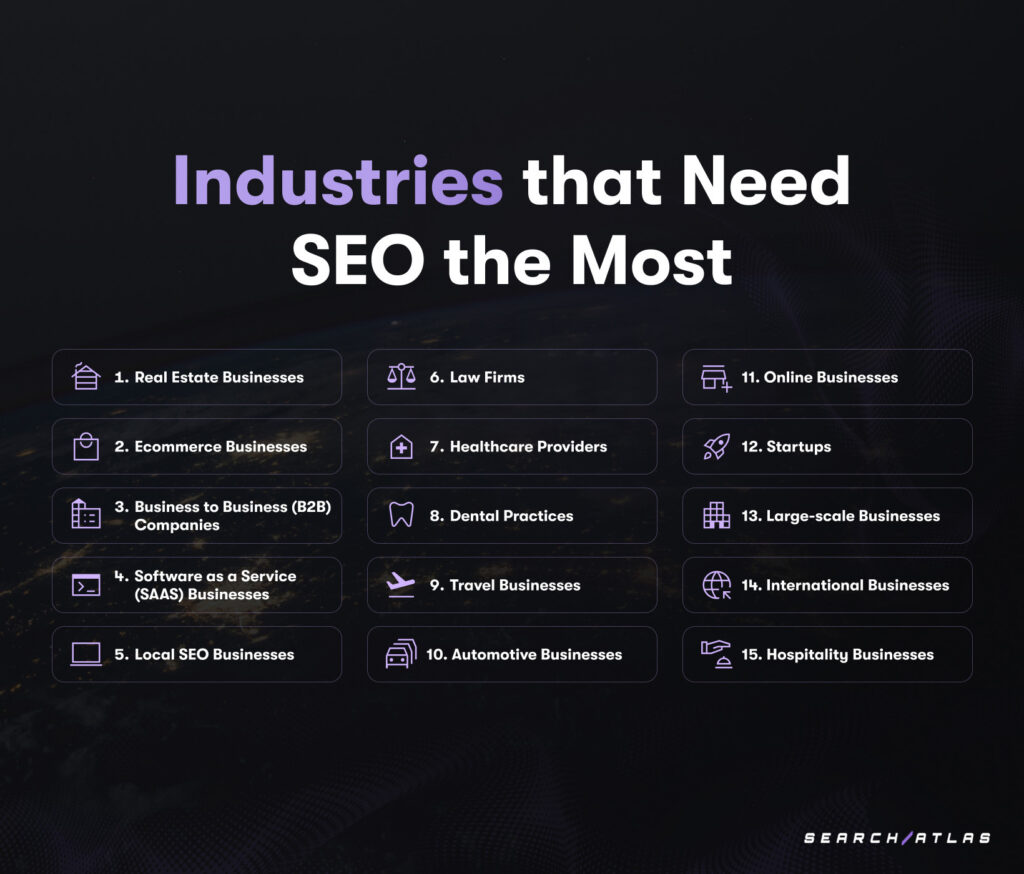
SEO has become a necessity across virtually all industries, but certain sectors derive particularly significant benefits due to their business models, competitive environments, and customer acquisition strategies. Industries with high-value conversions, lengthy research phases, or location-dependent services tend to see the biggest ROI from effective SEO implementation.
There are 15 industries that need SEO the most. The 15 industries that need SEO the most are listed below.
- Real Estate Businesses. Real estate companies face intense competition for high-value transactions that begin with online research. The property search process typically starts online months before purchase, making organic visibility crucial for capturing potential buyers early in their journey. Real estate SEO focuses on location-based keywords, property type optimization, and neighborhood content to attract qualified leads actively researching properties in specific locations.
- Ecommerce Businesses. Ecommerce businesses and online retailers compete directly against giants like Amazon while battling thousands of competitors for product-specific searches. With thin profit margins and high customer acquisition costs, organic traffic provides sustainable growth without the ongoing expense of paid advertising. Ecommerce SEO requires product schema implementation, category page optimization, and technical infrastructure that supports thousands of indexable pages while preventing duplicate content issues.
- Business to Business (B2B) Companies. B2B companies face extended sales cycles where potential clients conduct extensive research before contacting vendors. Organic search visibility during this research phase builds credibility and positions companies as industry authorities. LinkGraph, a B2B SEO agency, exemplifies how comprehensive content marketing and thought leadership content can establish authority in competitive industries with high customer lifetime values.
- Software as a Service (SaaS) Businesses. SaaS companies depend on steady customer acquisition to offset development costs and achieve profitability. With high customer lifetime values and subscription-based revenue models, organic traffic provides exceptional ROI. Search Atlas, a SaaS SEO platform, demonstrates how ranking for product category terms and solution-based queries helps capture users actively seeking software solutions to specific problems.
- Local Service Businesses. Local service business providers like plumbers, electricians, and home repair companies rely on location-based searches to generate leads. These businesses compete intensely for “near me” queries and city-specific searches that signal immediate purchase intent. Local SEO strategies focusing on Google Business Profile optimization, local citation building, and review management directly impact appointment bookings and service calls.
- Law Firms. Law firms and legal service providers face extraordinary online competition with extremely high client acquisition values. Personal injury, divorce, and criminal defense keywords can command $50+ per click in paid advertising, making organic visibility financially crucial. Law firm SEO requires expertise-demonstrating content, E-E-A-T optimization, and local search visibility to attract potential clients during urgent legal situations.
- Healthcare Providers. Healthcare providers and medical practices compete for patients in specialized fields while navigating strict compliance requirements. With patients increasingly researching symptoms and providers online before booking appointments, organic visibility directly impacts patient acquisition. Healthcare SEO must balance medical expertise with accessible content while maintaining HIPAA compliance and demonstrating authority through physician credentials.
- Dental Practices. Dental offices depend on local visibility to attract new patients within specific geographic areas. With customer lifetime values often exceeding $10,000, investing in organic visibility delivers exceptional long-term returns. Dental SEO combines local optimization techniques with educational content addressing common procedures, preventative care, and anxiety-reducing information to attract patients actively seeking dental services.
- Travel Businesses. Travel companies operate in an extremely competitive online environment with diverse search intents ranging from inspiration to booking. Travel planning involves extensive research across multiple sessions, making organic visibility essential throughout the customer journey. Travel SEO requires content that addresses diverse travel intents, from destination guides and itineraries to accommodation reviews and booking information.
- Automotive Businesses. Automotive businesses and car dealerships face competition from both local competitors and national listing sites. Vehicle purchases involve significant research, with buyers visiting multiple websites before contacting dealerships. Automotive SEO includes inventory optimization, location-based strategies, and content addressing common research queries about specific vehicle models, financing options, and comparison information.
- Online Businesses. Affiliate marketing sites, digital publishers, and content-monetization businesses derive direct revenue from organic traffic. These business models depend entirely on search visibility to generate page views that drive affiliate commissions or advertising revenue. Content SEO for these businesses requires comprehensive keyword research, competitive content analysis, and constant content refreshing to maintain rankings.
- Startups. New businesses face challenges in brand recognition and limited marketing budgets. Organic search provides a cost-effective channel for building awareness and acquiring customers without massive advertising expenditure. Startup SEO typically focuses on product-market fit keywords, problem-solution content, and building domain authority through quality backlinks to compete against established competitors.
- Large-scale Businesses. Enterprise organizations manage thousands of web pages across multiple domains, often with complex technical infrastructures. Enterprise SEO addresses crawlability issues, internal linking optimization, and cross-domain coordination to maintain visibility across broad product or service offerings. These organizations benefit from technical SEO at scale and the ability to leverage existing brand authority.
- International Businesses. Companies targeting multiple countries face unique challenges in maintaining search visibility across different languages, regions, and search engines. International SEO requires hreflang implementation, localized content strategies, and market-specific keyword research to effectively reach diverse global audiences while maintaining consistent brand messaging.
- Hospitality Businesses. Hospitality businesses like hotels, resorts, and restaurants depend on both local and tourist searches to maintain occupancy and reservation rates. These businesses compete against OTAs (Online Travel Agencies) and aggregator sites with substantial domain authority. Hospitality SEO combines local optimization techniques with amenity-focused content, reputation management, and schema markup to improve visibility in both map packs and organic listings.
Understanding industry-specific SEO requirements helps businesses implement strategies that address their unique challenges and opportunities. While the fundamentals of SEO apply universally, tailoring approaches to industry-specific search behaviors and competitive environments significantly improves results and return on investment.
What is an SEO Specialist?
An SEO specialist is a digital marketing professional who focuses on optimizing websites to improve their visibility in search engine results. SEO specialists combine technical knowledge, content strategy, and analytical skills to help businesses increase organic traffic and achieve marketing objectives through search channels.
SEO specialists possess a diverse skill set, including technical website analysis, keyword research, content optimization, link building strategy, and performance measurement. They stay current with search engine algorithm updates, industry trends, and best practices to maintain effectiveness in an ever-changing landscape. Core responsibilities typically include conducting website audits, developing SEO strategies, implementing on-page and technical optimizations, monitoring analytics, and reporting results to stakeholders.
Within the broader field of SEO, several related roles exist with varying focuses and expertise levels. An SEO consultant typically works independently, providing strategic guidance and recommendations rather than hands-on implementation. SEO experts possess deep knowledge in specific areas of search optimization, often publishing research or speaking at industry events. SEO professionals represent the broader category of practitioners working in the field, while SEO managers oversee teams and align SEO strategies with broader marketing objectives.
You might need an SEO specialist in the circumstances listed below.
- When organic search represents a significant opportunity for customer acquisition in your industry.
- When facing intensifying competition or declining search visibility.
- When undertaking website redesigns or migrations.
- When your organization lacks internal SEO knowledge yet recognizes its importance for growth.
What is an SEO Agency?
An SEO agency or an SEO firm is a specialized marketing company that provides search engine optimization services to help businesses improve their visibility in organic search results. SEO agencies implement strategic techniques to increase website rankings, drive qualified traffic, and improve conversion rates through sustainable, algorithm-compliant methods. These professional service providers employ teams of specialists with expertise in various aspects of search marketing, including technical optimization, content creation, link building, and performance analysis.
SEO companies differ from general digital marketing agencies by focusing specifically on organic search performance rather than paid advertising or broader marketing initiatives. While a digital marketing agency might offer SEO as one of many services, dedicated SEO agencies concentrate exclusively on improving search visibility through comprehensive optimization strategies tailored to each client’s industry, competition, and business objectives.
When choosing an SEO company for your business, several important factors should guide your decision. First, evaluate the agency’s track record by reviewing case studies, testimonials, and industry awards that demonstrate their ability to deliver measurable results for similar businesses. LinkGraph SEO Agency, an award-winning SEO company, exemplifies this standard through documented client success stories and recognition for excellence in SEO services across multiple industries.
Secondly, examine the agency’s transparency regarding their methodologies and reporting practices. Reputable SEO firms provide clear explanations of their optimization strategies and regular performance reports that track progress against established KPIs. Third, assess the agency’s technical capabilities and specialized expertise in your specific industry, as SEO requirements vary significantly across different business sectors.
Fourth, consider the agency’s approach to content creation and link building, as these core elements significantly impact search performance. Sustainable, quality-focused strategies indicate a commitment to long-term results rather than risky shortcuts. Fifth, evaluate the communication style and client service approach, as effective SEO partnerships require ongoing collaboration and clear communication channels.
Finally, review the agency’s pricing structure in relation to the comprehensiveness of services offered. While cost should not be the primary selection factor, understanding exactly what services are included helps ensure alignment with your budget and performance expectations.
What are SEO Services?
SEO services are professional optimization solutions designed to improve a website’s visibility in organic search engine results. These specialized services enhance website performance across technical, on-page, and off-page factors to achieve higher rankings, increased traffic, and improved conversion rates. SEO services typically include comprehensive analysis, strategic planning, implementation, and ongoing monitoring to ensure sustainable search engine visibility.
The scope and delivery of SEO services vary based on provider type and client needs. Some businesses prefer working with full-service digital marketing agencies that offer SEO alongside other marketing channels, while others choose specialized SEO agencies with deeper expertise in search engine optimization. Larger organizations often build in-house SEO teams supplemented by agency partnerships for specific capabilities. Regardless of the delivery model, effective SEO services align with business objectives, adapt to changing algorithms and market conditions, and demonstrate a clear return on investment through improved visibility, traffic, and conversions.
How Much Does SEO Cost?
SEO costs from $500 to $10,000 per month on average. SEO pricing varies based on service type, provider expertise, and campaign complexity. Standard SEO services charge between $500 and $5,000. High-end SEO agencies charge $10,000+ monthly for enterprise-level strategies. Hourly rates for consultants range from $50 to $300. One-time SEO projects cost $2,500 to $30,000.
Monthly retainers are the most common pricing structure for ongoing SEO services, typically ranging from $1,500 to $5,000 for small to medium businesses and $5,000 to $20,000+ for enterprise clients or highly competitive industries. Project-based pricing, ranging from $5,000 to $30,000 depending on scope, is often used for website migrations, comprehensive audits, or one-time optimization initiatives.
Several factors influence SEO pricing beyond company size. Industry competitiveness dramatically impacts costs, with sectors like legal, healthcare, and finance requiring more intensive efforts and specialized expertise.
Geographic targeting also affects pricing, with national or international campaigns typically costing more than local SEO initiatives due to broader competition. Website complexity, including factors like size, technical issues, and content requirements, directly correlates with necessary resources and therefore costs. The current state of your SEO and desired timeline significantly impact investment levels, with accelerated improvements or challenging starting positions requiring more substantial resource allocation.
Affordable SEO services start at $100 to $500 per month and cater to small businesses with limited budgets. These services can involve trade-offs in scope or implementation speed, focusing on core optimizations within specific areas like local SEO or content optimization. DIY approaches using tools like Search Atlas reduce costs and cut down the timeline, but require managing the tool yourself.
How to Start an SEO Business?

There are 11 steps to start an SEO business. The 11 steps to start a search engine optimization business are listed below.
- Define the SEO services you offer. Identify the core services for your search engine optimization business, such as keyword research, technical SEO, content optimization, and link building, based on demand and your expertise.
- Master the SEO services you choose to provide. Deepen your SEO knowledge by staying updated with algorithm changes, learning advanced SEO techniques, and refining your expertise through hands-on experience and industry research.
- Select a niche to target in the market. Specialize in a niche to differentiate your SEO business, allowing you to tailor strategies, build authority, and attract clients looking for industry-specific SEO solutions.
- Create a strategy for growing your SEO business. Assess your market position, identify your target audience, choose growth strategies, research competitors, and create an actionable plan to achieve expansion.
- Develop an online presence for your business. Build an optimized online presence showcasing your services, expertise, and client success stories to attract potential clients and demonstrate your SEO capabilities.
- Build a portfolio that showcases your SEO expertise. Use SEO case studies to highlight past successes, rankings, traffic growth, and ROI improvements, proving your ability to deliver measurable SEO results.
- Start to attract prospects to your SEO agency. Utilize inbound marketing, cold outreach, networking, and referral strategies to generate leads and acquire clients looking for SEO services.
- Focus on client retention with exceptional service and support. Prioritize long-term relationships by delivering consistent results, clear communication, and ongoing SEO optimizations to retain and grow your client base.
- Perfect the quality of the services you offer to clients. Focus on understanding client needs, asking for feedback, delivering quality work, personalizing your approach, training your team, and continuously improving client relationships.
- White label the SEO services you offer to clients. Use white-label SEO solutions like Search Atlas White Label SEO to deliver SEO services under your custom brand. The use of white-label SEO allows you to provide expert optimization while maintaining your brand identity.
- Expand to large-scale businesses through enterprise SEO strategies. Leverage enterprise-grade strategies and tools to manage complex site structures and improve search visibility at scale. Develop custom SEO frameworks for large-scale businesses using Search Atlas Enterprise SEO to drive significant organic growth.
According to a report released by Research and Markets, the SEO industry is projected to reach $122.11 billion by 2028, providing significant growth opportunities for well-positioned service providers who offer high-quality search engine optimization business services.
Is SEO Still in Demand?
Yes, SEO is still in high demand as search engines drive the majority of online traffic for businesses. With over 8.5 billion daily Google searches, businesses that neglect SEO risk losing valuable customers to competitors who invest in search visibility.
SEO will remain in high demand in the future because Google constantly updates its algorithm. The Google algorithm updates require businesses to continuously adapt their SEO strategies to maintain rankings. Recent developments like the integration of AI in search results, voice search growth, and the emergence of visual search have expanded rather than diminished the demand for SEO, creating opportunities for SEO professionals with specialized skills and adaptable strategies.
Is SEO a Profitable Business?
Yes, SEO is a profitable business because companies continuously invest in search engine optimization to improve their online visibility and drive organic traffic. The demand for SEO services is growing, with businesses spending billions annually on digital marketing. SEO offers multiple revenue streams, including consulting, agency services, and SEO reseller programs, where agencies outsource optimization work for additional profit.
SEO services typically maintain profit margins between 50-70% after direct costs, significantly higher than many service businesses. This profitability stems from the knowledge-based nature of SEO work, where expertise rather than physical resources drives value creation. Additionally, the recurring revenue model common in SEO services, which is monthly retainers of $1,000-$10,000 depending on client size, creates predictable cash flow and business stability. As agencies build systems and workflows, they can gradually increase efficiency while maintaining or increasing pricing, further improving profit potential.
Is SEO Hard to Learn?
Yes, SEO is hard to learn, as it involves understanding SEO’s core pillars, mastering main features, using SEO tools operatively, and developing tailored strategies for specific industries. The SEO field’s combination of technical concepts, creative content development, and analytical thinking creates a learning curve that varies based on your background and the depth of expertise you seek.
SEO becomes more manageable with consistent practice, access to resources like advanced SEO tools, and staying updated on algorithm changes. Learning SEO is achievable with dedication and time, and it becomes a valuable skill for driving long-term online success.
How Long Does It Take to Learn SEO?
Learning SEO typically takes 3 to 6 months to understand basic concepts, which include understanding key SEO terms and applying strategies learned from SEO tutorials. While there’s no official Google SEO certification, it’s possible to learn SEO with online tutorials, blogs, and courses that teach SEO for beginners, covering main concepts like keyword research and on-page optimization.
Mastering advanced SEO skills requires 1 to 2 years. Advanced SEO skills include search engine algorithm understanding, semantic SEO, and technical SEO. SEO is an ongoing process that requires constant adaptation to new trends and algorithm updates.
The time required to learn SEO depends on dedication and prior knowledge. Consistent practice, understanding how to learn SEO through reliable resources and courses, and staying current with search engine trends are all essential for becoming proficient in SEO.
How Does SEO Change Over Time?
SEO has evolved from focusing on exact keyword matches to understanding the meaning behind queries. Initially, SEO was about optimizing for specific strings of text, but with the introduction of entity-oriented search, Google started focusing on real-world entities and their relationships.
This shift led to the rise of semantic search. Google now processes and generates content based on topics and entities rather than just keywords. The middle period (2003-2011) saw increasing sophistication in Google’s algorithms with the introduction of major updates like Florida, which penalized keyword stuffing and other manipulative tactics. This era established the foundations of modern SEO, with the emphasis shifting toward quality content and natural link building.
The modern era (2012-present) has been defined by landmark algorithm updates that transformed SEO practices. The Panda update (2011) targeted low-quality content, while Penguin (2012) penalized manipulative link schemes. The same year, on May 16, 2012, Google announced its Knowledge Graph, the knowledge base behind the reliance on entities rather than strings. Hummingbird (2013) introduced semantic search capabilities that could understand query context rather than just matching keywords. Mobile-first indexing, introduced gradually from 2016, prioritized mobile-friendly websites as smartphones became the primary search device. The BERT update (2019) represented a quantum leap in Google’s natural language processing, enabling the search engine to better understand the nuances and context of conversational queries.
SEO professionals rely on SEO forecasting to stay competitive. The SEO experts must adapt to maintain rankings by staying informed through SEO workshops, SEO conferences, or tools providing SEO statistics to predict trends.
What are the Latest SEO Trends?
SEO trends are advancing strategies and techniques that improve a website’s ranking and visibility in search engines, reflecting changes in algorithms, user behavior, and technological developments.
The latest SEO trends are listed below.
- Google’s Search Generative Experience (SGE). SGE leverages AI to enhance search results with more direct, conversational answers. As Google integrates AI into search, businesses need to optimize for more specific, concise queries.
- Topical Authority. Topical authority in a specific topic is becoming crucial for ranking. Websites that consistently produce authoritative, well-covered content on a subject will gain more credibility on Google searches.
- Zero-click Searches. Google is increasing the use of rich features in search results like featured snippets, knowledge panels, and direct answers, bypassing the need for clicks. Optimizing for featured snippets and other rich results is crucial in SEO to capture traffic from featured snippets.
- First-hand Experience. Content rooted in real, personal experiences is becoming a major differentiator. AI generates text, but human insight and firsthand knowledge provide authentic value that AI cannot replicate.
- Author Entities. Author credibility and expertise are gaining importance in SEO rankings. Google increasingly values content tied to reputable authors with established authority in their fields.
What to Know About SEO Besides AI?
SEO focuses on improving website visibility in organic search results through technical optimization, content quality, and authority building, while AI (Artificial Intelligence) in SEO leverages machine learning to automate and enhance optimization processes.
The relationship between SEO and AI has developed significantly as search engines themselves increasingly integrate AI into their ranking algorithms. Combined with AI tools, SEO still requires a fundamental understanding of search engine guidelines, user intent analysis, and content quality standards. Successful AI SEO strategies join human expertise in creating valuable user experiences with AI’s capacity to scale analysis and implementation across large websites.
What is the Difference Between SEO and GEO (Generative Engine Optimization)?
SEO focuses on improving website visibility in traditional search engines like Google through content quality, technical structure, and backlink acquisition, while GEO (Generative Engine Optimization) tailors content for AI-powered search interfaces that generate original responses rather than linking to websites.
The relationship between SEO and GEO approaches represents the evolution of search from link-based discovery to direct answer generation. While SEO strategies target ranking factors for conventional search results, GEO focuses more on information extraction, entity recognition, intent matching, and providing comprehensive information that AI systems can synthesize into direct answers. As generative search grows more prominent, marketers must adapt their digital strategies to accommodate both traditional SEO and emerging GEO (Generative Engine Optimization) principles.
What to Know About SEO Besides Topical Authority?
The relationship between SEO and topical authority is integral. SEO encompasses topical authority as one of its core ranking signals, but extends far beyond content depth alone. SEO is the practice of optimizing websites to improve their visibility in organic search results through technical improvements, content optimization, and authority building. Topical authority refers to a website’s perceived expertise and comprehensive coverage of a specific subject area, demonstrated through semantically connected content that addresses all aspects of a topic and its related subtopics.
Beyond establishing topical authority, effective SEO requires mastering technical elements like site architecture and page speed, optimizing user experience signals, building quality backlinks, and addressing local search factors when relevant. Understanding that topical authority represents just one component of a comprehensive SEO strategy helps marketers balance content development with the many other ranking factors that influence search visibility.
What to Know About SEO Besides SEM?
SEO focuses on improving organic visibility through unpaid search results by optimizing website content, structure, and authority, while SEM (Search Engine Marketing) encompasses paid advertising strategies within search engines, typically through platforms like Google Ads.
The relationship between SEO and SEM is complementary rather than competitive. SEO builds sustainable long-term visibility, while SEM delivers immediate visibility for competitive terms or time-sensitive campaigns. Many businesses implement integrated search strategies that leverage both SEO and SEM (Search Engine Marketing), using paid campaigns to test keyword performance before investing in organic optimization and maintaining paid visibility for highly competitive terms while building an organic presence for broader topic coverage.
What to Know About SEO Besides PPC?
SEO creates sustainable organic visibility through content optimization and technical improvements to earn free traffic based on relevance and authority, while PPC (Pay-Per-Click) advertising provides immediate visibility through paid placements with specific budget allocations and bidding strategies.
The relationship between SEO and PPC offers distinct advantages. SEO delivers higher trust signals and long-term traffic without per-click costs, while PPC provides precise targeting and immediate results for competitive terms. Effective digital strategies often integrate both approaches, using PPC (Pay-Per-Click) data to inform SEO keyword selection and maintaining paid campaigns for high-competition terms while building an organic presence. Understanding that SEO represents just one component of a comprehensive search strategy enables marketers to develop balanced approaches that maximize visibility across both paid and organic channels.


